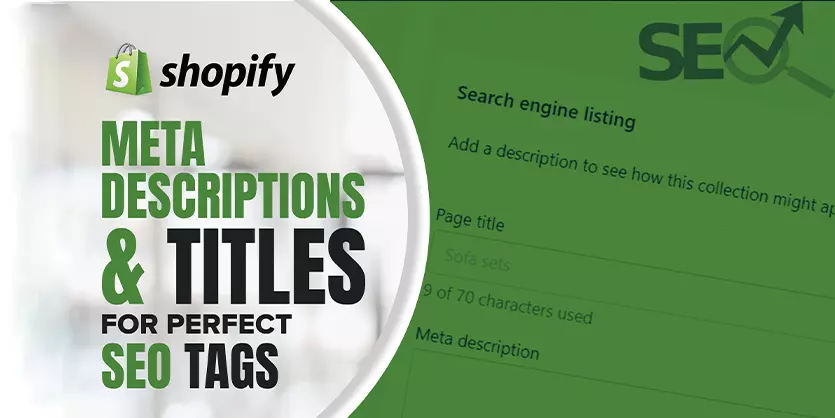In the world of e-commerce, optimizing your online store for search engines is paramount. Welcome to Ecomclips, where we guide you through the ins and outs of Shopify. Today, we’re going to delve into the world of Shopify SEO by showing you how to customize your Shopify SEO titles and meta descriptions.
Meta Title and Description
Meta title or SEO title is the title that appears as the clickable link in search engine results. It serves as a brief description of the content on your web page. For Shopify, it’s crucial to customize these for product pages, home pages, collection pages, blog pages, and other areas of your site.
The meta description is a concise summary of the content on your web page, displayed under the SEO title in search engine results. It provides users with a glimpse of what to expect when they click on your link.
Where Do They Appear?
Both the Meta Title and Meta Description appear in search engine results, particularly on Google. When users enter a search query, the SEO title and meta description are displayed in the results. This means that properly optimized meta titles and descriptions can significantly impact the click-through rate of your website.
Importance in Shopify Optimization
In Shopify, meta titles and descriptions are integral to your SEO strategy. They help your store rank higher in search engine results, enhance the user experience, and increase the chances of attracting potential customers. Whether you’re selling products, writing blog posts, or showcasing collections, optimizing these elements can make a big difference.
Basics to Create Meta Titles and Descriptions
Before you dive into optimizing your Shopify SEO, it’s crucial to understand the basic guidelines for creating these elements:
Meta Title
– Keep it under 70 characters to ensure the entire title is visible in search results.
– Use relevant and high-traffic keywords to make it more discoverable.
Meta Description
– Limit it to 155 characters to ensure it’s fully displayed.
– Include 3 to 5 targeted search terms to improve relevance and visibility.
To prepare your meta title and description, you’ll need to identify the right keywords for your product or content.
Keywords for Meta Titles and Descriptions
One effective way to discover suitable keywords is to use tools like SEMrush. Here’s how:
1. Log in to SEMrush.
2. Access the “Keyword Magic Tool.”
3. Search for keywords related to your product or content (e.g., “Baking soda” for a baking soda product).
4. Select keywords with a keyword difficulty below 30 and a high search volume to make it easier to rank.
Once you have your chosen keywords, it’s time to craft your meta title and description.
Crafting Meta Titles and Descriptions
For your meta title, select keywords that match your content. Ensure it’s under 70 characters and compelling.
For the meta description, weave in your keywords naturally while offering a brief, enticing summary of your product or content. Keep it under 155 characters.
Updating Meta Titles and Descriptions in Shopify
Now that you have your meta title and description ready, here’s how to apply them in Shopify:
1. Log in to your Shopify admin.
2. Navigate to “Products” and select the specific product you want to update.
3. Scroll down to the “Search engine listing” section.
4. Click the “Edit” button.
5. Enter your new meta title in the “Page title” field and your meta description in the “Meta description” field.
6. Optionally, you can edit the URL handle.
7. Save your changes, and your new meta information will be added to the page.
If you want to automate the process or you’re short on time, Shopify can automatically generate meta titles and descriptions for your pages. These auto-generated descriptions will use your page details to ensure they are relevant.
Conclusion
In the same way, you can customize meta titles and descriptions for other pages, including collection pages, blog posts, and more. This fine-tuning can improve your Shopify SEO, leading to higher visibility and more organic traffic. Mastering the art of crafting and customizing meta titles and descriptions is essential for a successful Shopify store. By following these steps, you can enhance your store’s SEO and boost its visibility in search engine results. Happy optimizing!
If you think this post has been helpful for you, please share this post with your friends and the e-commerce community. You can also check out our website www.ecomclips.com and get more updates! Keep browsing our blog to get more articles related to e-commerce. You can also mail us at info@ecomclips.com if you need any more help with Walmart.



